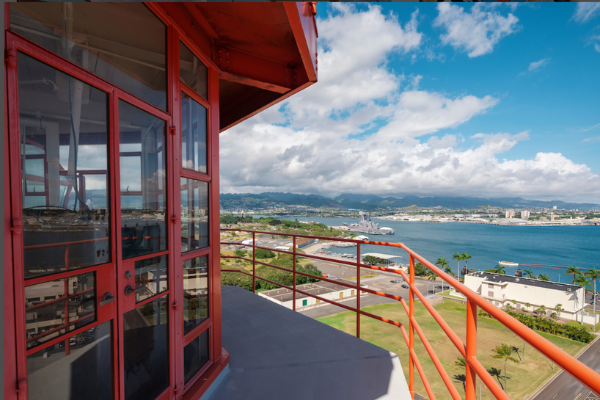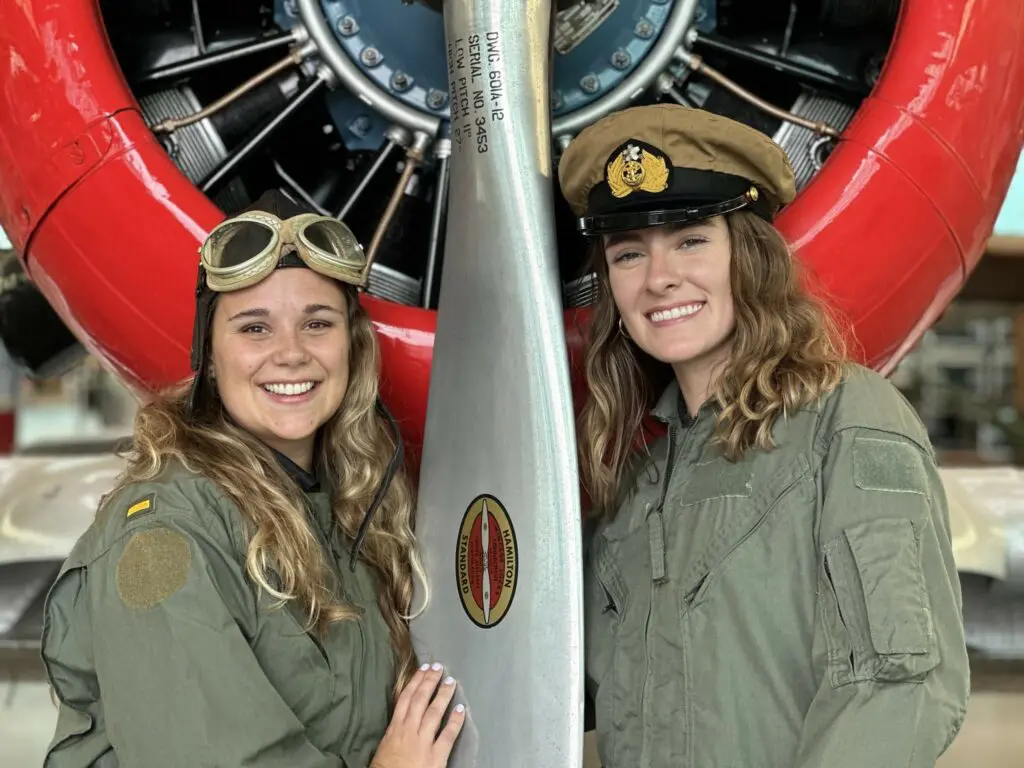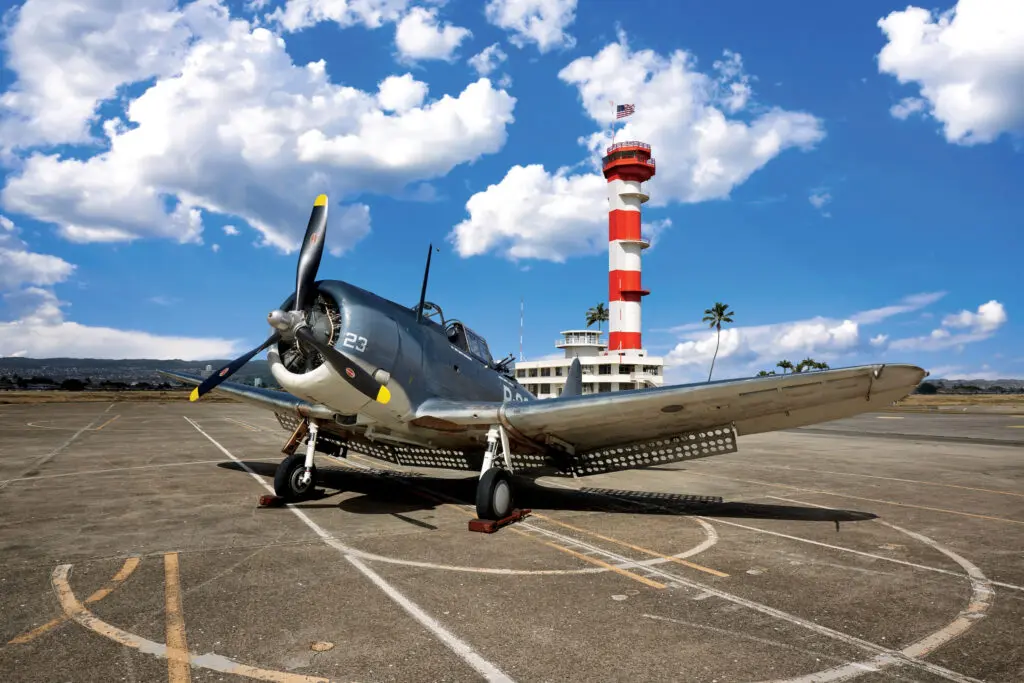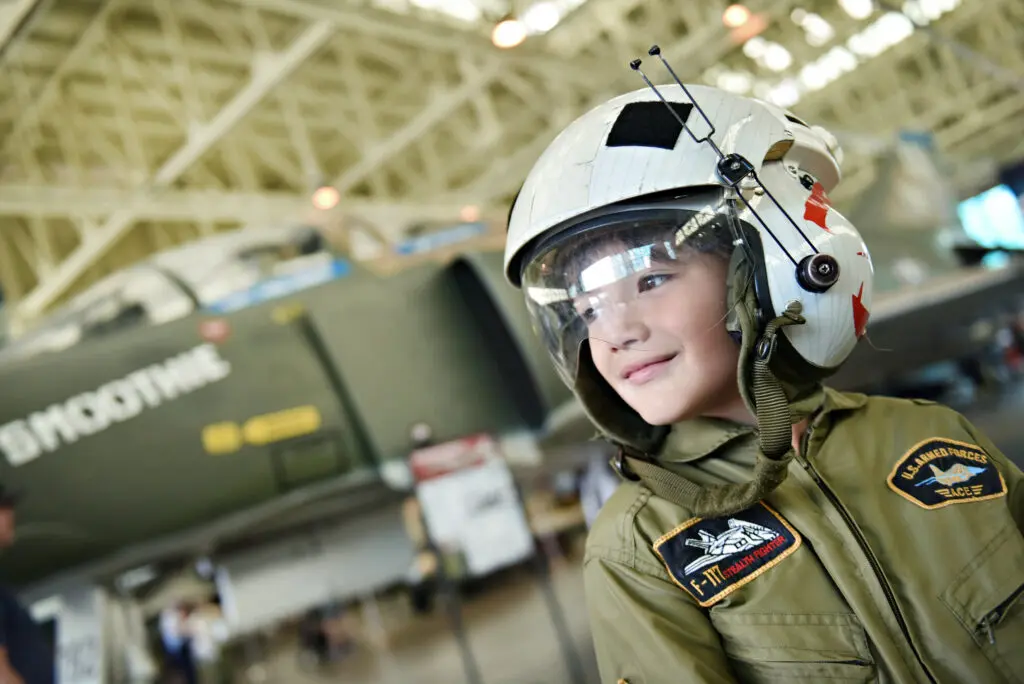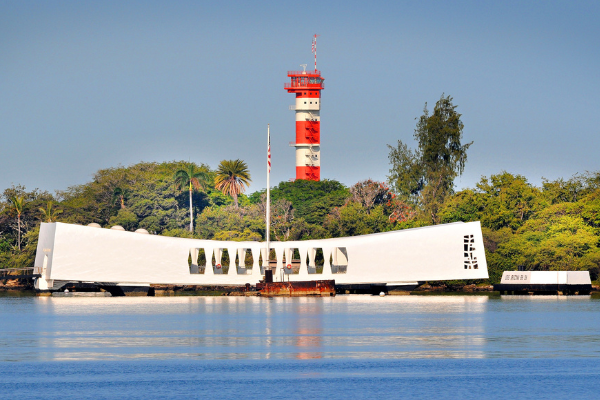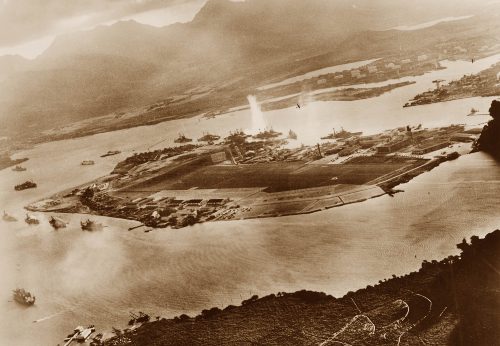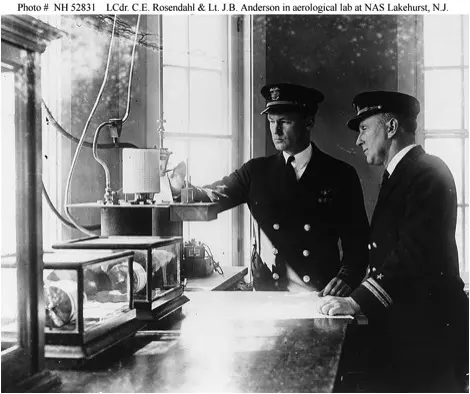Posted on December 06, 2011

2010

December 2, 2011
Control Tower on Ford Island, Pearl Harbor
Both Tora, Tora, Tora and Pearl Harbor prominently featured the tall red and white control tower on Ford Island. This article looks at the history of the control tower and its recent stabilization.
This is the second in a series of articles on Ford Island as it existed on December 7, 1941. Jumping right to the control tower is taking things a bit out of order. However, with the unveiling of the renovated control tower scheduled for December 7, 2011, it is the right time to look at this historic building.
Building the Operations Building (S84)
The control tower is part of the Operations Building (S84). This was a multipurpose structure built just to the north of the seaplane base hangars. Like many buildings on Ford Island, it was a brand new building when the attack occurred. In fact, it was not quite finished.
Figure 1 shows the building right after the attack. It is obvious from the figure is that the control tower was not painted red and white. In fact, it wasn’t painted yet. In addition, there is no control tower at the top. In fact, only two of its three rings are in place around the water tank. Although the control tower at the top of the big water tower was scheduled for construction, it was not in existence at the time of the attack. Aircraft had to be controlled from the building at the base of the water tank.

Figure 1: Building S84 around December 8, 1941. Source: National Archives 80-G-32482.
The figure shows a lower control tower on the roof of Building S84. This structure was created as an aerological tower (for wind direction and weather forecasting). However, until the upper control tower was built, it doubled as an interim control tower for wheeled aircraft using the runway. Figure 2 shows this structure in 1993, during the Historic American Buildings Survey project to survey building S84 [Hatani, 1993]. Figure 3 shows an aerological center, although not the one on Ford Island.

Figure 2: Aerological Tower and Interim Control Tower. Source: Historic American Building Survey, 1993. 048213PR.

Source: National Archives and Records Administration: NH-52831
Building S84 was called the Operations Building. It was actually a multi-purpose building that was designed to serve a number of functions. According to the Historic Buildings Survey assessment of the building [Hatani, 1993], it consisted of “a garage, operations/administrative offices, barracks, aerological tower, water tank, and aircraft control tower” on December 7, 1941.
Completing the Upper Control Tower
The upper control tower was finished on May 1, 1942, five months after the attack [U.S. Navy, 1945]. Figure 2 shows the building and control tower shortly afterward, on May 8, 1942. Note that although the building was finished, it was not painted. By the way, the small truck in front of the building in the middle was a wrecker/fire truck designed to work on crashed airplanes.

Figure 5: The Upper Control Tower on May 8, 1942
Finally Painted
We do not know exactly when the control tower was finally painted, but we do have a picture of it in August 1942. This is Figure 3. It is not a very good picture, but the control tower is visible in the lower right part of the picture. The tower is painted in sinuous camouflage. We do not know what the camouflage colors were, but red and white would not make for very good camouflage.

Figure 6: The Control Tower Painted in Camouflage August 1942
Figure 6 gives a better image of the camouflaged tower on December 10, 1942. This picture is taken from the north, which is unusual. In the foreground on the left are revetments for aircraft to protect them from attack. These revetments were built after the attack. They were later torn down.

Figure 7: Camouflaged Tower on November 10, 1942. Source: National Archives.
When Did the Tower Become Red and White?
We are even more uncertain when the tower was painted red and white. Figure 4 shows the control tower in 1944. It is still in camouflage. Presumably, it remained this way through the war.

Figure 8: The Tower in June 1944
We also know that when Tora, Tora, Tora was filmed in 1969, the tower was red and white. Unfortunately, we have no idea when between 1944 and 1969 the tower was painted red and white. We are currently looking for pictures of the tower between 1944 and 1969 to get a better understanding of when the color was changed to red and white. If you have any pictures of the tower, please contact our Curatorial Department 808-441-1016.
Building S84 on December 7, 1941
Although S84 looked different on the day of the attack than it did in its finished red-and-white form, it played an important role on the day of the attack. Aviator Harvey Waldron [Quazilbash 2010] recalled that oil-soaked survivors of the battleships were wandering around in a state of shock. Waldron and others took them to S84, where they tried to remove the oil from the victims with their t-shirts and anything else on hand, although Waldron said that it was “hopeless.”
During the attack, operators in the lower control deck guided the Enterprise SBD Dauntless scout planes that arrived in the middle of the attack. Although five SBDs were lost to Japanese and American fire, most were able to land on the Ford Island runway. Two are visible in a photograph taken from S84 of Hangar 37, which is Pacific Aviation Museum’s first hangar. After servicing and arming with bombs, the SBDs later went back up, despite continuing danger from “friendly fire,” in an attempt to find the Japanese fleet.
Later that night, the commander of the Enterprise air group, who had arrived that morning in one of the surviving SBDs, tried to use the radio in the tower to warn six arriving Enterprise F4F Wildcat fighters to land directly instead of making a customary pass around the island [Erickson, undated]. The Enterprise aircraft either ignored him or could not hear him. When they made a pass over the airfield, nearly all the guns in the harbor opened up on them, with fatal results.
The Historic American Building Survey in 1993
In 1993, the Historic American Buildings Survey conducted a study of Building S-84 [Hatani, 1993]. Referring to two 1970 architectural drawings, the report said that the first floor was converted into a fire station that year. The first floor continued to be a fire station when the survey was done.
The second floor was divided in half. At some point, the southern half (the half closes to Hangar 37) was converted into a chapel, but that use ceased about 1988. The southern half then became a storage area.
When the study was done, the northern half of the second floor was used as a training facility and offices for the Naval Station Police Department.
At the time of the study, the aerological tower had been converted into a control deck for civilian touch-and-go practice. The control deck was operated by Hawaii State Department of Transportation. Civilian operations started in 1970 and lasted till 1999. They ended when Barbers Point was closed as a naval air station and a civilian airport opened in its place.
Finally, the report noted that the steel water tank and upper control tower were in a state of disrepair and had been abandoned. Although there were plans to renovate the two-story building, there were no plans at the time to renovate the water tower or upper control tower.
Was It Ever a Dive Tower (Pearl Harbor)
At the beginning of the museum in 2006, things were a bit rushed, and several historically inaccurate things were said to visitors. The biggest gaffe was frequently saying that the tower, which is a large water tank, was a navy submarine diving tower for training submariners in how to evacuate sunken submarines. This was completely wrong. The water tank was never a dive tower. The confusion probably occurred because Pearl Harbor did have a navy dive tower. It was, as you would suspect, on the submarine base. Figure 5 shows the submarine base. The dive tower is small but clearly visible.

Source: National Archives. Submarine Base on October 13, 1941. 80-G-451125.
References
Hatani, Dennis and Hatanki, Dennis K. Hatani, Inc., Historic American Buildings Survey, U. S. Naval Base, Pearl Harbor, Operations Building (Building No. S84), HABS No. HI-145, October 1993.
Quazilbash, Homa, Local Veteran Looks Back at Pearl Harbor, KTVZ.com, December 7, 2010. http://www.ktvz.com/news/26054286/detail.html.
U.S. Navy, History of U.S. Naval Air Station, Pearl Harbor, Territory of Hawaii, 1945.
Erickson, F. A., Lt., U.S.C.G, Incident of Enterprise airplanes, Attempt Landing, 10 December 1941. Undated.

